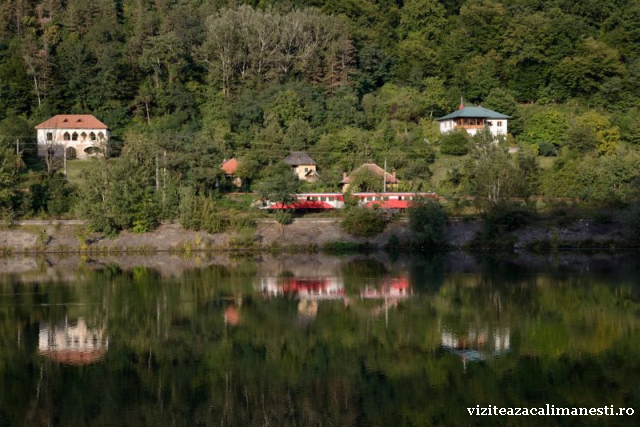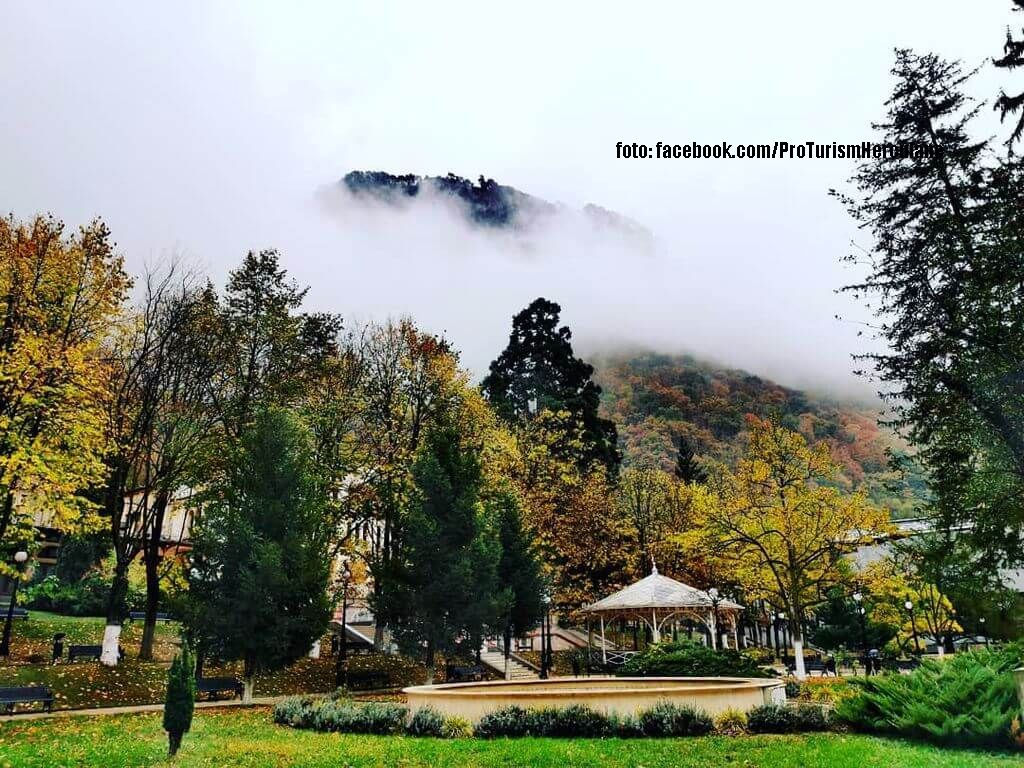A new prize-winning contest on RRI
RRI has launched a new contest entitled: The Govora Spa – A Healing Oasis

Daniel Onea, 15.01.2015, 14:01
Govora was well-known for the therapeutic quality of its salty, iodine waters and its sapropelic mud, but the first spa treatment facility was built here in 1887. Located in the south west of Romania, at the foot of the Carpathians, the resort has a rich history. You will find here a spa museum showcasing medical equipment dating back to the beginnings of the spa resort and the interwar period. The resort has changed a lot in recent years, as its mayor, Mihai Mateescu explains:
“Govora’s spa park has been rehabilitated, its walks covering 6,950 m. A flood lit waterfall has also been created, which fits in perfectly with the landscape. Street furniture, including benches and streetlamps, has been installed. We made it a priority to put more benches in the park. Initially, the great French architect Emile Pinard, the designer of the spa park, thought that the walks should be used for spa purposes and not for strolling. We have maintained the general structure of the park but have added an open-air amphitheatre fashioned after the Roman arenas. It is an amphitheatre where people can spend their free time in summer. In winter it hosts carol concerts. In the past, the park had 26 streetlamps, but now there are 200 such lamps, which create a pleasant atmosphere. We wanted the park to be attractive to tourists, because we had in mind not only the old people who usually come to Govora for spa treatment but also the children and young people who can benefit from various treatments in Govora spa”.
Given its highly ionised air and the stream crossing the resort, Govora is a good place for walking. There are many walking routes around, built after the model of those in the famous German spa town of Baden Baden, says the mayor of Govora Spa, Mihai Mateescu:
“The walking route through the forest is spectacular. Govora has many old buildings in need of restoration. The town’s urban plan only provides for restoration, ruling out any alteration to the buildings or their demolition. Everything is meant to promote the tourist routes leading to monasteries, the airport and an area that has recently become very popular with tourists, the Transalpina mountain pass”.
The history of Govora is also linked to the name of Princess Elisabeth of Wied who became Queen of Romania after marrying King Carol I of Hohenzollern-Sigmaringen. The queen wrote over 50 books of poetry, essays and prose in French, German, English, Romanian, Latin and Greek. She signed them all with the penname Carmen Sylva, which comes from Latin and means “the song of the forest”. The mayor of Govora, Mihai Mateescu, wants to retrace the route usually taken by Queen Elisabeth in her coach. There is also a house in Govora called Sylva, named after the queen’s penname.
Visitors to the town can also go and see the cinema built in 1929 and designed by Romania’s first female architect, Virginia Haret Andreescu. Cycling tracks and special areas for skateboarding and roller-skating are also available. In mid August, Govora celebrates its anniversary and many events are held on this occasion, including outdoor theatre and music performances and firework displays. Govora’s mayor Mihai Mateescu says Govora has played host to many other events, such as the World and European Tourist Orienteering Championships. Here he is again with some of the plans to encourage tourism:
“Govora’s natural surroundings are perfect for active tourism, and our plans take this into account. We have also employed professionals to draw up the town’s new urban plan. One of the most important studies we have conducted refers to the history of spa treatment. It is an extraordinary study carried out by the students of the National Institute of Architecture coordinated by an exceptional teacher, Sergiu Nistor. The new town planning regulations are based on this study and they have to be observed by the town’s current and future authorities.”
According to the data made available by the Valcea County Council, Govora can accommodate as many as 1,900 people in its 5 hotels, 14 villas and 3 camping sites. To benefit from attractive prices both for accommodation and treatment you should book in advance, says Bogdan Pistol, the vice-president of the Valcea County Council:
“First I would like to congratulate all of you for listening to RRI and I’m extending you the invitation to come and visit Valcea county, where you will find good accommodation facilities. If you come to Govora you will find a 4-star hotel providing the same conditions you find in Karlovy Vary. The resort is proof that coherent action can lead to good urban planning. The spa park has been modernised and accommodation facilities are among the best.”
We’ll go back to Govora in our future instalments in Traveller’s Guide to tell you more about the type of spa treatment available in this resort. So, stay tuned to our programmes, send your contributions by April 30th and you can win a trip to Govora.






























